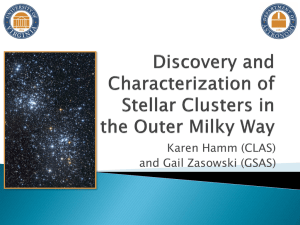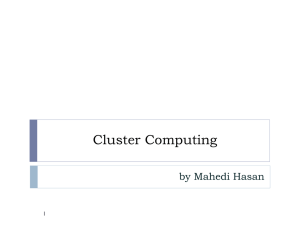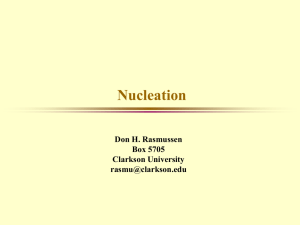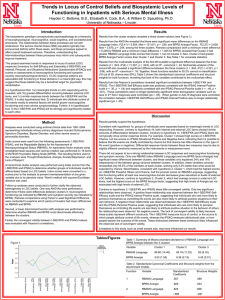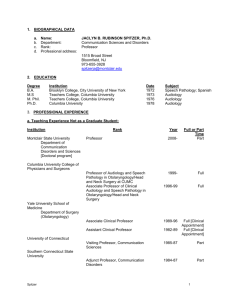Two Hoos Presentation
advertisement
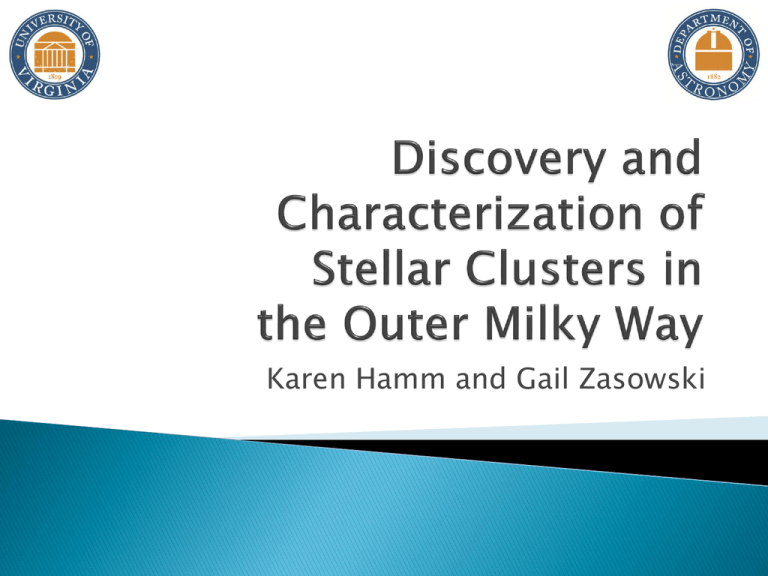
Karen Hamm and Gail Zasowski Groupings of stars Born from the same giant molecular cloud Young, low stellar density objects Contain up to several thousand stars M45: The Pleiades M67 Effects of mass on stellar evolution are directly visible for star clusters Distances can be calculated more reliably Better account of stellar evolution, Milky Way evolution and structure, and historical and present star formation Artistic depiction of the evolution of a galaxy NASA telescope High angular resolution and sensitivity Allows us to view our galaxy in the midinfrared ◦ Less affected by stellar dust and extinction Spitzer Space Telescope Galactic Legacy Infrared Mid-Plane Survey Extraordinaire 360 (GLIMPSE-360) NASA/ JPL Caltech ◦ Spans the far, outer regions of galaxy (65° < l < 265°) Vela Carina ◦ Spans longitudes of 255° < l < 295° Outer regions are relatively unexplored for open star clusters Longitudes covered by the GLIMPSE-360 (dark-orange) and Vela Carina (purple) surveys • • • SAOImage DS9 Individual images scaled to roughly 1° × 1° bins Criteria – Over-density of stars – Similar size and brightness Sample screen shot of SAOImage DS9 program Searched for previously published cluster identifications and parameters Generated color-magnitude diagrams (CMDS) ◦ Color/brightness distribution The likelihood of the candidates being genuine clusters were sorted based on the clarity of the Spitzer image and the strength and disparity of the CMDs Used a modified application of the RayleighJeans Color Excess method (RJCE; Majewski et al. 2011) to isolate cluster stars Each cluster CMD represents the stellar sequence of that cluster, as well as foreground and background Galactic features Cluster stars should share similar foreground reddening Used the RJCE reddening estimate for each object in the cluster field to search for these distinct stellar sequences Fit Girardi et al. (2002) isochrones to the stellar population Cluster Comparison Restrict E(H-[4.5μ]) range to [0.2 – 0.45] Cluster Comparison Cluster Comparison Restrict E(H-[4.5μ]) range to [0.0 – 0.1] Cluster Comparison Identified a number of unknown and uncharacterized open clusters in the outer Milky Way Derived basic cluster parameters (reddening, metallicity, distance) for objects with well-populated near-IR CMDs Of one-hundred open clusters identified in the GLIMPSE-360 survey, roughly twodozen appear to be new candidates Presently finalizing a paper to announce these new open clusters and provide parameters for little-studied clusters Vela Carina as senior-thesis focus R.L. Beaton (University of Virginia) S.R. Majewski (University of Virginia) B. A. Whitney (University of WisconsinMadison) Churchwell, E., Babler, B. L., Meade, M. R., et al. 2009, PASP, 121, 213 Whitney, B., Arendt, R., Babler, B., et al. 2008, in Spitzer Proposal ID #60020, 60020 (GLIMPSE-360) Carey, S., Ali, B., Berriman, B., et al. 2008, in Spitzer Proposal ID #50398, 50398 (SMOG) Hora, J., Adams, J., Allen, L., et al. 2007, in Spitzer Proposal ID #40184, 40184 (Cyg-X) Majewski, S. R., et al. 2008, in Spitzer Proposal ID # 40791,40791 (Vela-Carina) Whitney, B., Benjamin, R., Meade, M., et al. 2011, in Bulletin of the American Astronomical Society, Vol. 43, American Astronomical Society Meeting Abstracts No. 217, 241.16 Majewski, S.R., Zasowski, G., & Nidever, D.L. 2011, ApJ, 739, 25 Girardi, L., Bertelli, G., Bressan, A., et al. 2002, A&A, 391, 195



